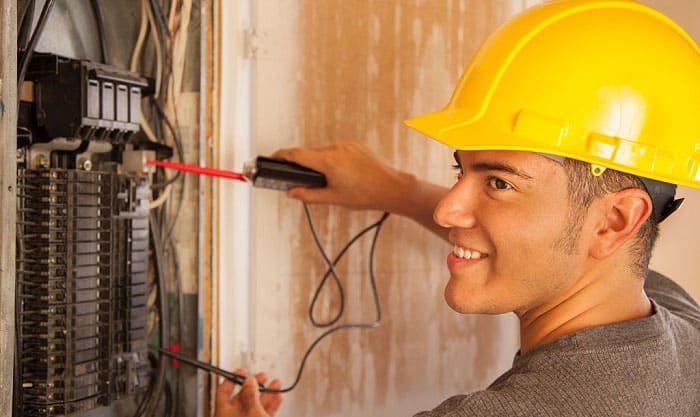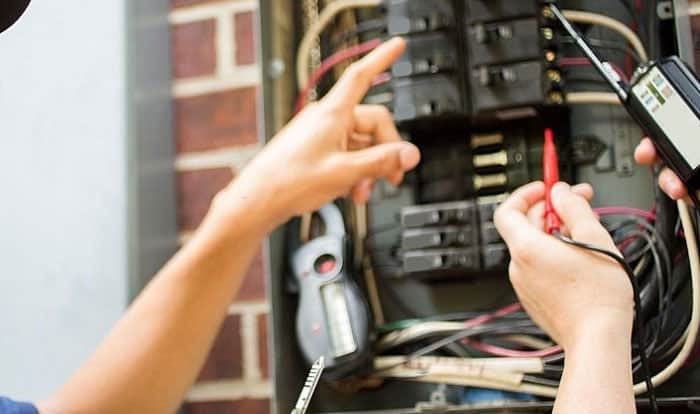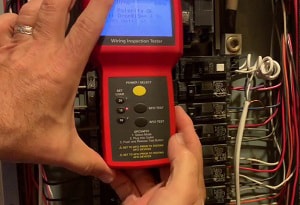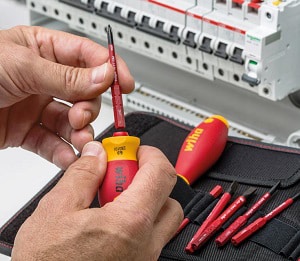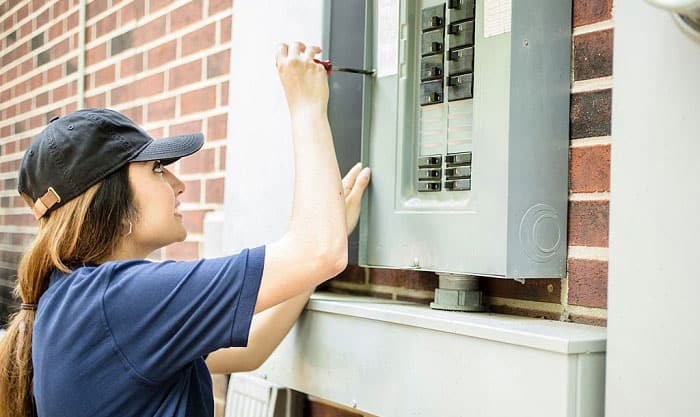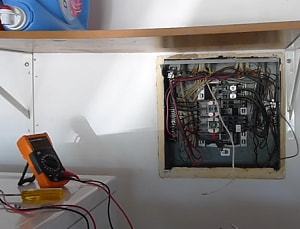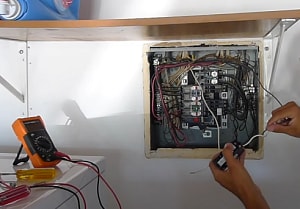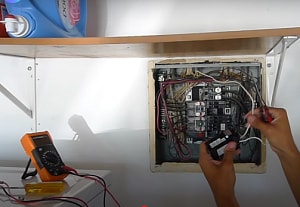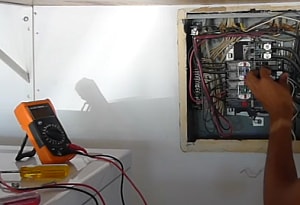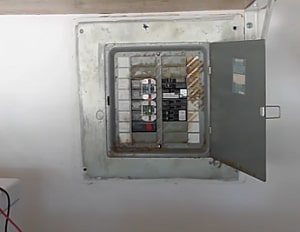Have you ever wondered how to install dual function AFCI/GFCI circuit breaker? With the National Electrical Code (NEC) regulation implemented in 2014, you’ll need to add an arc fault protector or AFCI for your home in addition to the previous safety device requirement, the GFCI.
Having separate GFCI and AFCI breakers is quite bothersome for some homeowners because, in some cases, they’ll also need to install a GFCI outlet while having an AFCI breaker. That’s why with this inconvenience, installing a dual-function CB is a great answer.
What You Will Need
Before we get started, gather up the essentials I listed below for quick continuous work. As a disclaimer, never begin if you don’t feel confident or relaxed while touching a high-voltage electrical panel. You install this breaker for your safety, not to cause yourself danger. If DIYing isn’t for you, contact a contractor.
1. Dual-Function AFCI/GFCI Breaker
The primary item for this project is the dual-function breaker that you will install. Its function is to suppress both arc fault and ground fault risks. It is also known as a Combination AFCI GFCI Breaker, so never confuse it with an Arc-Fault Circuit Interrupter, which is only for protecting against parallel and series arcing conditions.
This Overcurrent Protective Device (OCPD) has two types: the pigtail (standard) and the plug-on neutral (advanced model) connection. Make sure to find out which connectivity matches the design of your electrical panel.
Also, be brand-specific when you buy a breaker; it should come from the same manufacturer as your panelboard to avoid electrical anomalies. If you are unsure what to purchase, consult your panel manufacturer.
Consider your circuits too. If you have various circuit sizes, ensure that you have suitable breaker sizes for each one: 15-amps for the bathroom and 20-amps for the kitchen, for example.
2. Multimeter
Multimeters are sacred tools when it comes to electrical projects. You’ll need this device to check out live connections or confirm that you did not have incorrect wiring after the project.
It is a safety instrument to use before installing the GFCI AFCI breaker. It helps to read different electrical units, specifically volts for CBs so that you’ll know if they’re functional or not.
On the other hand, if a multimeter is not available, you can also use a non-contact voltage tester to check if a specific area is safe to touch. However, this lacks the feature of being able to read the voltage. Its capability is only limited to detecting the presence of a voltage—it doesn’t measure how many volts flow in that spot.
3. Screwdriver Set
Since a breaker’s wirings are held into place by screws, you’ll need a screwdriver to remove or place them back. You’ll need a screwdriver set that will fit the head of each screw inside the load center.
In some cases, breaker panel companies differ regarding their product’s screw heads and sizes. But do not worry, the standard set of electrical screwdrivers can help you get by with ease. Phillips and flat-head drivers are enough for the job.
4. PPE for Electrical Work
Finally, prepare Personal Protective Equipment or PPE. Given that you will be working in front of an electric distribution board, protecting yourself is very much required. What you’ll need is pretty self-explanatory. Get something to insulate and cover your hands and feet.
A rubber glove is good, and so is putting on boots to avoid the risk of grounding. I highly recommend using insulated floor mats as well. If you’re only using a floor mat, make sure to cover all workplace spaces.
Steps to Installing Dual-Function Circuit Breaker
Wiring a dual-function CB is almost the same as installing a typical circuit breaker. Their only difference is that there are three wires coming from the dual-function breaker itself. Now that we’ve gathered all that we need, let’s go ahead and put your GFCI arc fault breaker into its place.
Step 1: Main Breaker Panel Preparation
For safety’s sake, suit up with PPE to insulate yourself against the possible high electrical current as you progress through this tutorial. Then, shut down the main power line that feeds your load center. What we need to achieve here is the assurance that panel surfaces are safe to touch.
Use your multimeter or voltage tester to test the screw points on your panel cover before you make contact with your screwdriver. When you’re certain the power’s off, unscrew your panel cover from the bottom going all the way to the top, corners first.
Step 2: Check for Electrified Spots
After revealing your breaker panel’s insides, test other metallic areas that can shock you; these include the bus bars, setscrew, and other wirings. Set your multimeter to voltage reading and press its probes down to the mentioned areas.
Now that you have clearance, remove your old breaker (the one that needs replacement) by carefully pulling it outward from the seat of the hot bus bar blades. Unscrew the wirings connected to the old breaker once it is out.
Step 3: Connect the Circuit to the Dual-Function Breaker
Identify which circuit will go into your breaker before an AFCI breaker installation. There are two wires: one, the white neutral wire that goes into the Neutral screw indicated on your breaker, and two, the black wire or the hot wire, which goes to the hot screw of the breaker.
Ensure that the breaker is off before inserting these wires into their respective areas. Screw them shut. There’s also a pigtail wiring from your combination breaker, but you’ll deal with this later on.
Step 4: Insert the Combo Breaker Into Position
With the circuits connected, slide your breaker into its appropriate tab. Be careful not to bend the hot bus bar when interlocking the base of your breaker to the mounting rail. Once it is seated at the main bus bar, you can feel if the breaker lies flat and if it’s on the same level as the other circuit breakers.
Next, grab the pigtail wire and attach it to the neutral bus bar terminal inside the load center. Fasten it with a screwdriver and keep all wirings nice and tidy.
Step 5: Wrap up your work
Now that your dual-function AFCI/GFCI breaker is finally connected, it is time to finish things up. Get your panelboard cover and carefully put it back into its original position. Let someone assist you if it is too heavy for one person.
Now, do the opposite procedure from the panel removal steps earlier. From top to bottom, secure the middle screws, then the corner screws.
Step 6: Switch on the Main Breaker
Check all circuit breakers if they’re in the off position before turning on the power for your main electrical panel. Start switching the CBs from the lowest to the highest amperage when you finally energize the load center—do this to avoid the risk of a power surge.
Lastly, put the dual-function breaker to the test. You can refer to the instruction manual to see how to do it. Usually, this type of device has a self-test feature.
And that’s it! You’re done installing AFCI breaker with GFCI protection.
Here’s a video that you can refer to to better understand this tutorial:
Conclusion
Are you satisfied with your new fail-safe device? Although it is easy to learn how to install dual function AFCI/GFCI circuit breaker, you can’t be careless with every step listed in this tutorial, especially when connecting and inserting the breaker. Pay strict attention to where you’re supposed to fasten your wires and make sure to interlock your CB flat on the main bus bar.
Keep in mind the steps I shared with you in this tutorial and follow safety precautions firmly. Do you have any thoughts, comments, or suggestions? Write down your insights in the comment tab below and share this if you find this article helpful.

I am Edwin Jones, in charge of designing content for Galvinpower. I aspire to use my experiences in marketing to create reliable and necessary information to help our readers. It has been fun to work with Andrew and apply his incredible knowledge to our content.

